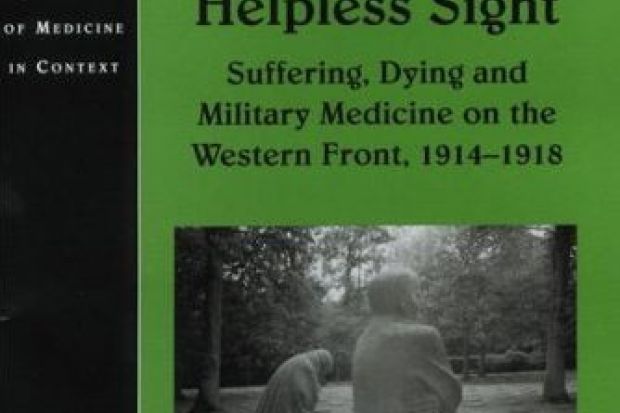The First World War gave war a bad name and, as the rather chilling title of this book forewarns, Leo van Bergen is keen to tell us why in grisly detail. No doubt a stroll around the battlefields of Agincourt or Flodden immediately after opposing armies clashed would have been grisly, but the total war on the Western Front was characterised by its industrial scale, the huge numbers involved and its perseverance with no breaks for the seasons or the harvests. The industrial image of the conflict is brought home not just by the machinery of war, the artillery, barbed wire, gas and the tank, but by van Bergen's concept of hospitals for the wounded as repair factories, putting men together again so that they could go back into action.
This volume in Ashgate's series The History of Medicine in Context charts in detail all the horrors of the war through chapters on "Battle", "Body", "Mind", "Aid" and "Death". The book does not just describe the ways in which men were killed or wounded but investigates their treatment in hospitals for wounds, illnesses, loss of limbs and shell shock. It also discusses the effects of the damp and unsanitary conditions of trench warfare, the attempts of armies to deal with that ancillary threat to military fitness, venereal disease, and the onset of the influenza epidemic in 1918. The concluding chapter deals with the death toll, which the author estimates as 20 per cent of those who served in the front line.
Can the horrors of the war be portrayed as even bleaker than they were? Well, van Bergen does his best and at times departs from a dispassionate medical history to an Oh! What a Lovely War caricature in which authority figures were always incompetent and usually callous. Van Bergen gives numerous accounts of cruel treatment of the wounded or shell shocked by some doctors and nurses, with few mentions of the dedicated and humane care that many experienced. Doctors were concerned to return men to the military machine as well as to heal them and the evacuation of the wounded from the battlefield came second to holding the line, but the only realistic yardsticks for evaluating the medical care of soldiers are comparisons with what was provided in previous wars and the extent of medical knowledge at the time. Not only had the technology of killing advanced beyond the strategic thinking of prewar staff colleges, but the number of casualties threatened to overwhelm the Army medical services, whose record is more mixed than this author admits.
This is a valuable study of the horrors of the Great War, but van Bergen spoils his case by his enthusiasm for the "men herded like cattle to slaughter" approach. The armies fighting on the Western Front were recruited and conscripted from the best-educated European nations and many were industrial workers and trade unionists, accustomed to resist authority when they found it unfair.
In the end, armies rely upon morale and men do not obey, in a four-year war, generals they believe are incompetent, nor do they continue fighting in a war they think is pointless; the collapse of the Russian armies in 1917 demonstrates that even the most severe discipline cannot prevail when confidence is lost. Among the waste of young lives, there was bravery, self-sacrifice, patriotism and comradeship. The memorials erected afterwards were not just sites of mourning, but monuments to the valour and endurance of armies who believed, rightly or wrongly, in their causes. To see only the "butcher's bill" does not do justice to those who died.
Before My Helpless Sight: Suffering, Dying and Military Medicine on the Western Front, 1914-1918
By Leo van Bergen
Ashgate
5pp
£35.00
ISBN 9780754658535
Published 19 February 2009
